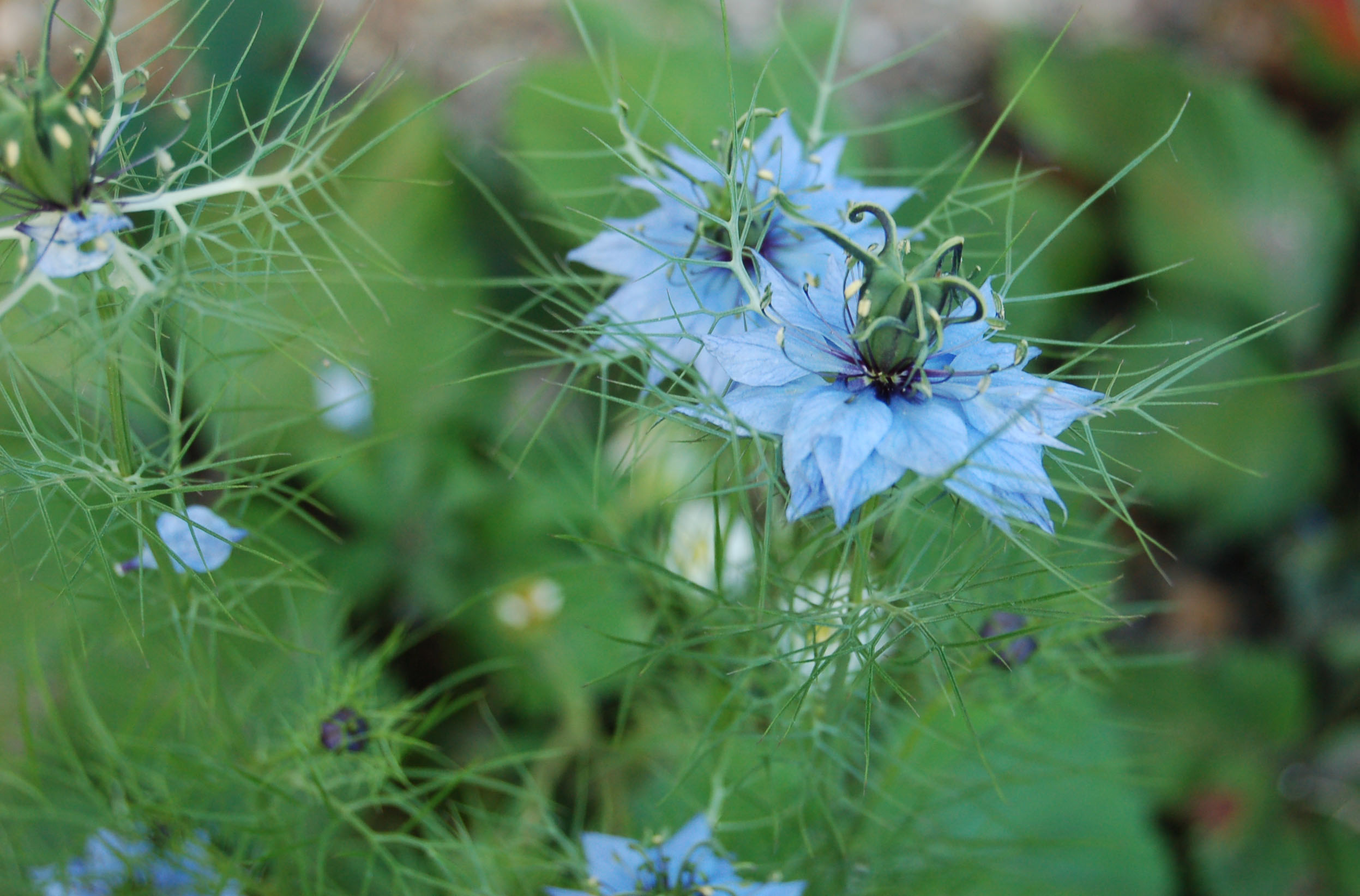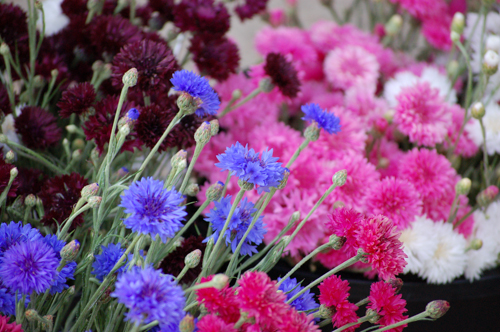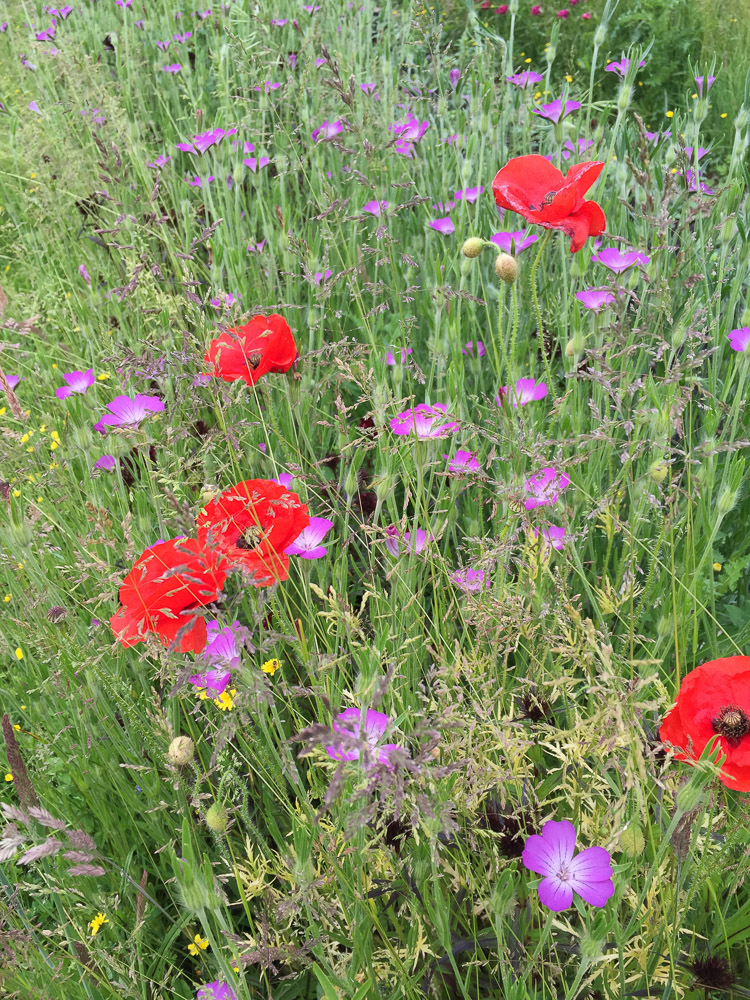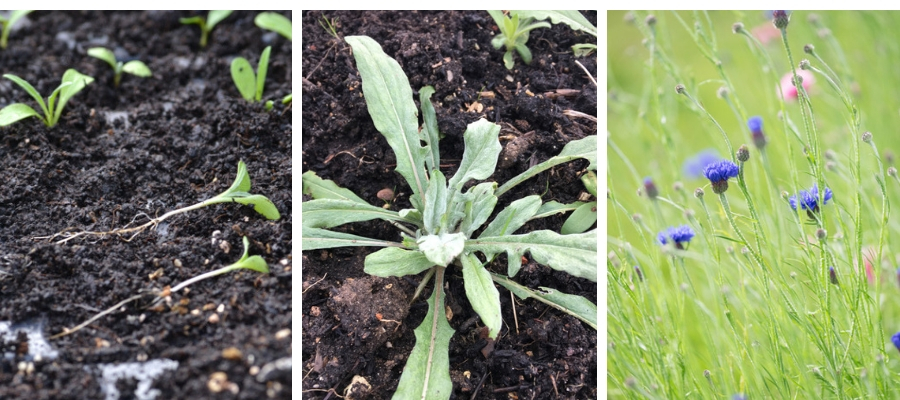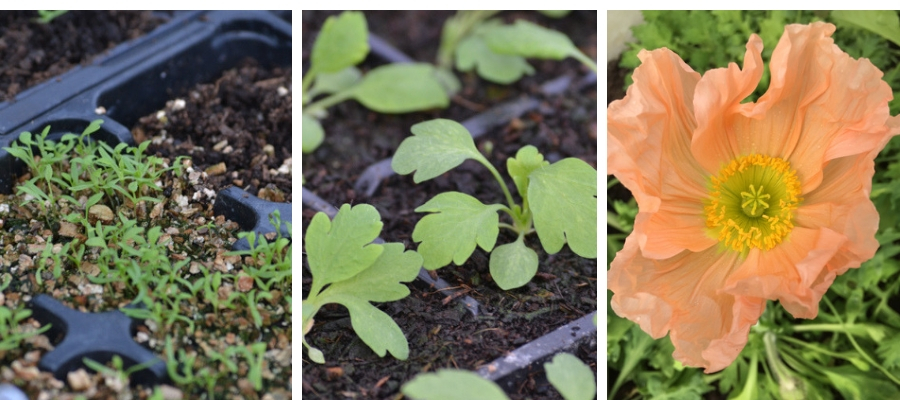When to plant seeds for a season full of flowers
Paula, Mill Pond Flower Farm
The key to a season full of flowers, is a well planned planting strategy. The diagram above shows a planting plan across 12 months that aims to have flowers and foliage available for sale from the beginning of March to the end of October in a UK climate. If you are growing in a different part of the world, your growing seasons may be different.
Any book, seed packet or expert will tell you to plant flower seeds in the Spring, starting around March, or waiting until the soil is nicely warm. They might add that some can be attempted in September, but very few will advise planting in October, November or December.
While growing flowers for sale for a number of years, I've been watching and noting how nature does it. There is an unwritten law in flower farming that states the strongest plants are the ones that are self seeded, the ones that pop up in late spring and do so much better than the ones we carefully plant, cosset and nurture, protecting from winds and hailstones. The 'volunteers' just appear, grow away and flower beautifully. I usually find them in sheltered spots in late March, already with a few months growth behind them and unbothered by the cold and wet of a British winter, so think about working on imitating nature, to grow the earliest and strongest hardy flowers possible.
For us, there are different things that volunteer themselves on each of our plots
For Carol
Top 5 volunteers: Nigella, Poppies, Borage, Honesty, Cynoglossum
For Paula
Top 5 Volunteers: Nicandra, Cornflower, Poppies, Borage, Feverfew
For Claire
Top 5 volunteers: Feverfew, Corncockle, Cynoglossum, Clary Sage, Phacelia
“Question : Which things are volunteers on your plot?”
Achieving strong Autumn sown plants for cut flowers
There are two ways to achieve good strong autumn sown plants for cut flowers:
Collect self sown seedlings
Learn to recognise the early stages of cut flower plants. They will self seed in your plot (if you haven’t cut and sold every single stem!) and a keen eye for seedlings will ensure you can make the most of your naturally growing seedlings, moving them to a safe place where you can grow them on and harvest them efficiently.
Sow seeds in autumn
The most important issue in autumn sowing is to choose the right plant. The criteria for the choice of seeds is:
those that will happily self seed outside - very hardy annuals such as Godetia, Cornflower, Nigella, Calendula, Linaria, Icelandic poppies, Corncockle, Nicandra, Sweet peas
tricky germinators that often take a long time to appear - Orlaya, Bells of Ireland, Larkspur
hardy perennials needing a period of cold - Astrantia, Delphinium, Helenium
Most hardy annual seeds do need to be germinated in warmth, so a period of time in a heated propagator might be needed to get them growing. However, the key is to make sure they stay cool once germinated so there is no chance for leggy or weak growth. Slowly does it, with plenty of opportunity to develop strong roots and the plants are ready to shoot off at the first sign of spring. Get them going nicely and you can feel that Spring is already on its way, even before the weather warms up!
On this advanced course, we're assuming that you've sown seeds before, but if you want a reminder of the key points, here are a couple of Claire’s How To videos.
The key thing with all seedlings is not to "check them". This means stopping growth by letting them dry out, get too wet, get too cold or too hot, or get root bound. This last one means that seedlings need to be pricked out either into warm ground, or into larger module trays and pots for keeping under cover over the winter. Key points are covered in this video
Each year we all discover new and different hardy annuals that we find are great for sowing early, but here below is a list made between the 3 of us of suggested varieties suitable for Autumn sowing
Seedling Identification
We've said that learning what seedlings look like is important for getting strong volunteer plants. It helps when you've been going for a few years and you've got plans of what's been in those beds before, but for now, we're going to give you some visuals of some of the plants that are most likely to pop up on your field if you've grown any of them before.
Cornflowers, Larkspur, Gypsophila, Poppies
The most productive hardy annuals
We've given you a whole list of hardy annuals that can be sown now, and with the right conditions will make it through the winter, and will be ahead of anything that gets sown in early spring, with larger root systems, and so the ability to produce taller and stronger stems.
But which ones win in terms of stem numbers to sell in that all important late spring window, when customers are interested in our flowers, but the season is only just started?
These are the ones that Claire thinks are the most productive.
Orlaya grandiflora - Laceflower
The first year I grew Orlaya I sowed a whole packet of seeds, but only managed to grow 3 plants. These were planted in my polytunnel and cosseted. From 3 plants, I sold 57 stems to florists, and I have pictures of them in bouquets that I made in late June, so I guess at least 20-25 stems a plant were produced. Now I sow one batch in September which get planted outside and covered in environmesh over winter, and I interplant my polytunnel ranunculus with Orlaya plants sown in October, grown in 7cm modules over winter, and planted into the beds between the ranunculus plants in March. I’ve tried growing them as Spring sown plants, but never manage to get as tall stems as those that have overwintered, so I’ll stick to Ammi for later in the year.
Centaurea cyanus - Cornflowers
Cornflowers germinate fast, and get good root systems quickly. For that reason they are ideal for Autumn sowing, and need pricking out within 5 days of germination. This usually means 8 to 10 days after sowing them.
I get the best and strongest plants when I space them well, - just 3 plants across each of my 90 cm beds.
These Autumn sown plants get excellent root systems and grow tall, meaning that by mid-May I have plenty of flower buds coming.
By late May, they are strong and tall plants with up to 20 flower stems per week per plant, Usually I give up picking late June, not because they aren’t still producing hundreds of blooms each week, but because I can’t keep up with the picking/ dead heading.
Daucus carota - Flowering Carrot
Daucus carota which is probably correctly named as a biennial rather than a hardy annual is a great umbellifer that follows on from where Orlaya finished flowering in Mid June. This Carrot family flower is another that needs winter protection from rabbits, but if you can prevent them nibbling then this is another plant that you are likely to give up picking because you can’t keep up with it, rather than because it runs out of steam. It’s one that you think has only got a few stems ready, and then before you know it you’ve got 65 gorgeous flowers in your hand.
Ammi majus - Queen Anne's Lace
Ammi majus is another umbellifer that really benefits from Autumn sowing. The difference in height and so stem length from Autumn to spring sown plants is terrific. With the strong bold Autumn sown plants producing a lot more stems per plant, and plants putting down lots of growth over the winter.
Lathyrus odoratus - Sweet Peas
The last one on my list which is an absolute must for piles and piles of Spring flowers are Autumn sown sweet peas. Now admittedly these are best grown in a greenhouse or polytunnel for early blooms, but late September or October sown sweet peas can be flowering outside in sheltered areas by June. They can be kept in pots until late February or early March, and then are hardy enough to be planted even if we get late frost. The last couple of years I’ve been selling a good proportion of my blooms as sweet pea trails, which keeps the blooming even longer.

